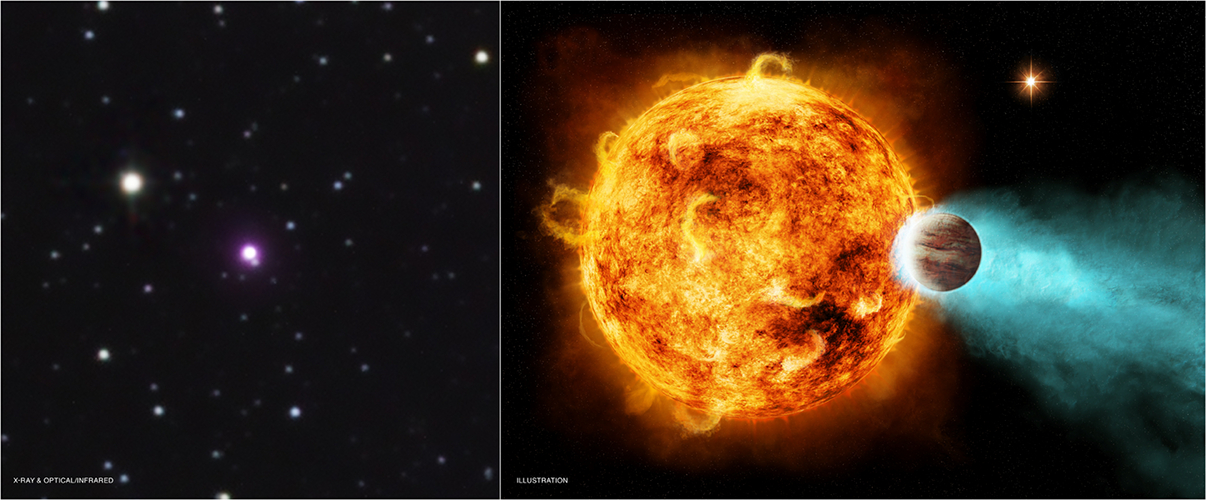
 Credit: X-ray: NASA/CXC/Univ of Hamburg/S.Schršter et al; Optical: NASA/NSF/IPAC-Caltech/UMass/2MASS, UNC/CTIO/PROMPT; Illustration: NASA/CXC/M.Weiss
Credit: X-ray: NASA/CXC/Univ of Hamburg/S.Schršter et al; Optical: NASA/NSF/IPAC-Caltech/UMass/2MASS, UNC/CTIO/PROMPT; Illustration: NASA/CXC/M.Weiss
Blasted Planet
Recent studies of stellar systems with dedicated satellite observatories like Kepler, along with ground-based studies like the Lick-Carnegie Exoplanet Survey, HARPS, and many others have provided glimpses into the startling diversity of planetary systems that exist in our Galaxy. A number of them are real oddballs. Some of them may be earthlike, and may even be
possible homes for earth-like creatures. Most of the identified planets are located in regions that are inhospitable for life, primarily because they are too close to their alien suns. An interesting case in point is the recent discovery of CoRoT-2b, so named because it was discovered by the European CoRoT (COnvection ROtation and planetary Transits) space observatory. CoRoT-2b orbits its parent star, CoRoT-2a, every 1.7 days, and is about 3 times more massive than Jupiter. Because the planet is very close to CoRoT-2a, the two interact strongly with each other, with deadly consequences. Observations with the Chandra X-ray Observatory show that CoRoT-2a emits a surprisingly large amount of harmful X-rays. The image above left is a composite of a Chandra X-ray image (in purple) along with optical and infrared data from the Panchromatic Robotic Optical Monitoring and Polarimetry Telescopes (PROMPT) and the Two Micron All Sky Survey (2MASS). The bright purple glow around CoRoT-2a shows that it's an X-ray bright object. Astronomers think that the gravitational tug of CoRoT-2b helps keep the star so X-ray bright. Too bad for CoRoT-2b, since this violent X-ray emission blasts the planet, causing it to lose 5 million tons of material a second, as shown in the illustration above right. No cause for immediate concern, though; at this rate it will take more than 8 billion years to entirely evaporate the planet.
Published: September 19, 2011
<
HEA Dictionary ● Archive
● Search HEAPOW
● Other Languages
● HEAPOW on Facebook
● Download all Images
● Education ● HEAD
>

Each week the HEASARC
brings you new, exciting and beautiful images from X-ray and Gamma ray
astronomy. Check back each week and be sure to check out the HEAPOW archive!
Last modified Tuesday, 27-Feb-2024 10:10:01 EST


